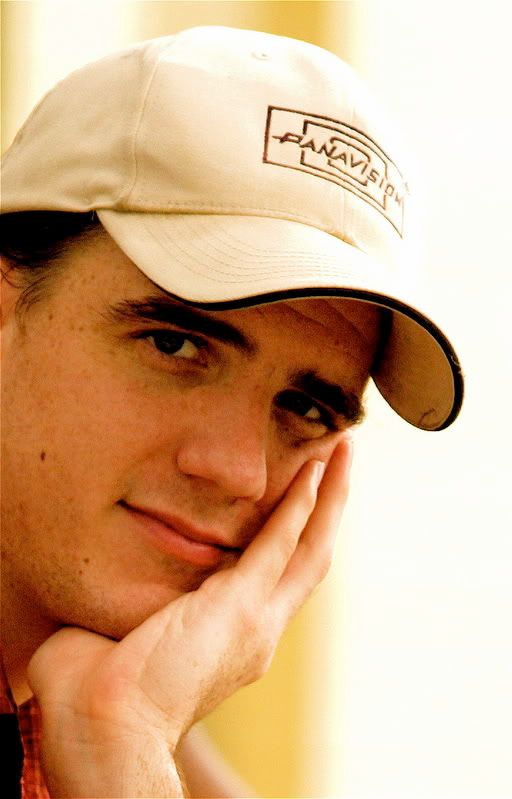[Editor's note: forgot to tell you all the prompt. "Discuss the relationship between emerging technologies and artistic expression."]
Emerging Technologies, You, and Everyone We Know
an essay by Andrew Kenneth Gay
Except in the cases of singing, dancing, mime, and black box theater, artistic expression has always been dependent on technological developments. Even cave painting was once an emerging technology. Many an artist throughout the ages has had an idea, but few have expressed them without the use of tools. Audiences too have tools, and in recent years, enjoyment of art has increasingly grown reliant on high-tech breakthroughs. Whereas once art could only be enjoyed face to face, art connoisseurs can now consume through such means as the internet, the iPod, and High Definition television, and the tools of artistic expression have quickly evolved to maintain the symbiotic relationship that exists between creator and consumer. Nowhere has this evolution been as transparent as in the creation and transmission of visual media.
This evolution — indeed revolution (dare we even say revelation?) — in the field of visual media has had an impact on the economy, distribution, quantity, and even quality of its creation. Most consumer grade digital photography cameras and many cell phones, for instance, are now capable of capturing live video, a capability that has already been exploited to create visual media with a venue for exhibition (see Ithaca College's upcoming festival and Patryk Rebisz's "Between You and Me" for examples). These are technologies to which the average American has access at a negligible cost (the cell phone or digital photo camera itself may cost more than the production of a similar project on a Super 8mm movie camera, but the cell phone and digital photo camera have the following incentives: [1.] they are practically self-contained technologies that do not depend on film and processing and [2.] they each have an everyday use that makes them more practical than the Super 8mm movie camera). Because the creation of such media is less expensive than it used to be, the quantity of the media being created has grown. As a result of the quantity, distribution methods have been developed. Almost anyone can now create visual media and have it seen by hundreds even thousands of people. The sheer inclusiveness of such a model, however, causes many to worry about how it will affect the quality of the work being created.
As a friend once said, "Sure, more people can now create 'art' and have it seen, but that also means a lot more crap is being made. As the crap saturates the market, it will be harder for the stuff with any quality to rise to the surface." This argument has some validity, but it has very little to do with the accessibility of media creation. Crap has always saturated the market and has always made it difficult for quality art to compete. How else could Brittney Spears sell more albums than Neil Young? But isn't the discovery of just one homegrown Neil Young valuable enough to justify giving a thousand armchair Brittany Spears an opportunity to express themselves? Arguments to the contrary conceal an elitist attitude, like a God that denies access to a Tree of Knowledge. Art and its creation belong to everybody. Emerging technologies have made that philosophical truth a fact.

Dude. You are BUTCHERING Britney Spears' name. Fix that now. And also, before I comment further, what exactly is the prompt here? I'd expected to see an essay more about yourself.
ReplyDeleteOh, and my word verification word is cygvpxr. Boring.
Cheers,
Diego